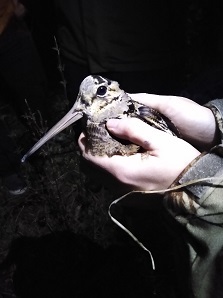In-Person Hunter Education Program Courses Now Available
Turkey season starts on May 1. All first-time hunters planning to go afield this year must first complete a mandatory hunter education course before they can purchase a hunting license. In-person, instructor-led certification courses for hunter education, bowhunter education, and trapper education are being offered throughout NYS. Courses fill quickly, so do not delay in registering for a course. All courses are free of charge. To locate a course near you, visit DEC's website.
Take a Youth Hunting! – DEC announces the 2023 Youth Turkey Season
New York State offers several youth hunting opportunities to allow young hunters time afield with experienced adult hunters outside of the regular hunting seasons. As a result, they gain the necessary knowledge and skills to become safe and responsible members of the hunting community. This spring, the youth turkey hunt is April 22rd and 23th.
If you’re an experienced, licensed hunter, please consider taking a youth out! The youth season is open throughout upstate New York and even in Suffolk County. Several non-profit groups sponsor specific events, and we encourage experienced hunters to reach out and take a kid hunting.
Other details of the youth turkey hunting weekend are as follows:
- Eligible hunters are youth 12, 13, 14, or 15 years of age, holding a hunting license and a turkey permit.
- All youth hunters must be accompanied by an adult, as required by law for a junior hunter.
- Youth 12 or 13 years of age must be accompanied by a parent, legal guardian or person over 21 years of age, with written permission from their parent or legal guardian.
- Youth 14 or 15 years of age must be accompanied by a parent, legal guardian or person over 18 years of age, with written permission from their parent or legal guardian.
- The accompanying adult must have a current hunting license and turkey permit. S/he may assist the youth hunter (including calling), but may not carry a firearm, bow or crossbow, or kill or attempt to kill a wild turkey during the youth hunt. Crossbows may not be used by licensees who are under 14 years of age.
- The youth turkey hunt is open in all of upstate New York (north of the Bronx-Westchester County boundary) and Suffolk County. Shooting hours are from 1/2-hour before sunrise to noon.
-
The bag limit for the youth hunt is one bearded bird. This bird becomes part of the youth's regular season bag limit of two bearded birds. A second bird may be taken beginning May 1st.
- All other wild turkey hunting regulations remain in effect.
What’s that sound?
 Have you been outside at dusk lately near an open field or scrub brush area? Have you been startled by a loud PEENT sound followed by twittering sound? What you’re likely hearing is a courtship display of a male American woodcock trying to attract a mate. Woodcock are a common ground nesting bird found throughout New York State. Over the past 70 years, woodcock numbers have declined throughout their range in Eastern North America. NYSDEC and SUNY Brockport are partners in much larger collaborative research project being lead by the University of Maine to understand migration chronology and habitat use. This spring, DEC biologists and SUNY Brockport researchers will be in the field capturing woodcock to attach transmitters on females to learn more about habitat needs. The hope is to develop a modeling tool so landowners and land managers can prioritize areas for woodcock habitat management that will have the greatest likely impact on populations. Have you been outside at dusk lately near an open field or scrub brush area? Have you been startled by a loud PEENT sound followed by twittering sound? What you’re likely hearing is a courtship display of a male American woodcock trying to attract a mate. Woodcock are a common ground nesting bird found throughout New York State. Over the past 70 years, woodcock numbers have declined throughout their range in Eastern North America. NYSDEC and SUNY Brockport are partners in much larger collaborative research project being lead by the University of Maine to understand migration chronology and habitat use. This spring, DEC biologists and SUNY Brockport researchers will be in the field capturing woodcock to attach transmitters on females to learn more about habitat needs. The hope is to develop a modeling tool so landowners and land managers can prioritize areas for woodcock habitat management that will have the greatest likely impact on populations.
|


 Have you been outside at dusk lately near an open field or scrub brush area? Have you been startled by a loud PEENT sound followed by twittering sound? What you’re likely hearing is a courtship display of a male American woodcock trying to attract a mate. Woodcock are a common ground nesting bird found throughout New York State. Over the past 70 years, woodcock numbers have declined throughout their range in Eastern North America. NYSDEC and SUNY Brockport are partners in much larger collaborative research project being lead by the University of Maine to
Have you been outside at dusk lately near an open field or scrub brush area? Have you been startled by a loud PEENT sound followed by twittering sound? What you’re likely hearing is a courtship display of a male American woodcock trying to attract a mate. Woodcock are a common ground nesting bird found throughout New York State. Over the past 70 years, woodcock numbers have declined throughout their range in Eastern North America. NYSDEC and SUNY Brockport are partners in much larger collaborative research project being lead by the University of Maine to